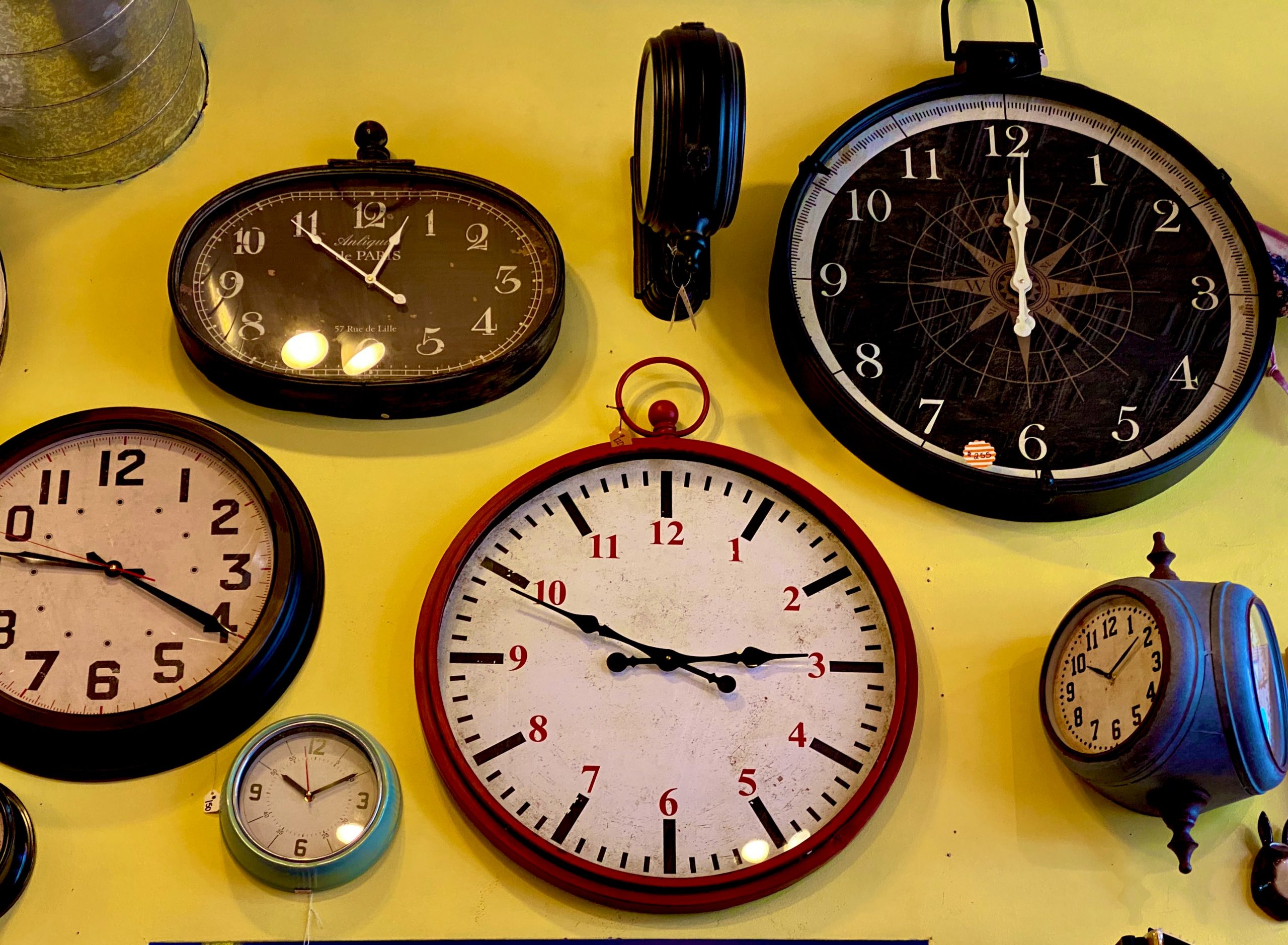Telling Time in Your Story

Readers Need to Know Where They Are In the Story Timeline
As a writer, you set the timeline for your reader. Time is part of setting, and you need to let readers know what time it is in your scene. In the same way, you ground your reader with setting details like the room in a house or a desert valley; you need to help them understand the flow of time in your story.
If there’s a scene jump, did an hour pass? A day? A month? How do readers know?
Create a Story Calendar
To reference time markers for your readers, you need to know the time in your story. Do this by creating a timeline or calendar for your story.
You can use paper, create a digital file, or use software like Aeon Timeline to order your story events in sequence.
Know the story events and when they happen. Include all story events from the first page to the last. Some writers add backstory events from something a simple as a birthdate to major life events that occurred in the past. You and your reader will know when a past event happened; for instance, your protagonist’s parent died ten years ago.
Add which characters are present at each story event. You will know, and your reader will know who had access to an event. This notation is especially helpful for mystery writers. Who was there at the event and who knows it only by hearsay.
For each story event, include the time of day and weather details. These details will ground you as you are writing the scene and help readers understand the passage of time in your story.
Having a timeline will keep you from overlapping events, or your character traveling in unrealistic time limits, whether they are traveling by horse to Rome from Ravenna or San Francisco to Paris.
Your story calendar will help you insert time markers into a story with a realistic time progression.
Telling Time With A Clock
The obvious way to anchor your reader with time is to announce the day and time. Some stories, especially in crime fiction, use the date and time as chapter headings or subheadings.
Robert Harris starts each chapter of Pompeii with the date and the Roman hour. 22 August – Two days before the eruption; Conticinium [04:21 hours].
In the narrative, a character can glance at a clock or watch. This action builds tension when the character is working against a deadline. This technique works in detective and thriller stories when the protagonist feels the pressure of the clock ticking.
But establishing time works best with a subtle use of time markers that hint at the time without guiding the reader with a clock.
Telling Time Without A Clock
Your story needs time markers, so the reader understands the passage of time. Without time indications, readers become confused, stop reading, and turn back to try to establish the time of the current scene.
As a writer, you can get caught up in the action and dialogue and forget to add time markers. A practical way to help readers is to start each scene with a time reference. Then, in the middle of the scene add a second time marker.
Events
Use references to story events, both past and future, to remind readers of the passage of time. Is the train/ship/plane leaving in hours/days? How close is your sleuth to the deadline?
If you mention that an upcoming event will happen in one week, readers will know a week has passed since the earlier scene when the event happens in the story.
Transitions
Transitions from one scene to the next can be short or long. Exactly 28 hours after Mike received the telegram, or the next morning, or that night are examples of short transitions that help your reader understand time passing.
If there is a long break in time between scenes, a longer passage helps move your story through time. For the next month, Axel discovered nothing. He filled out papers. Caught up on reports and hated what he thought was time-wasting activities. No one called. He’d followed all the leads…
Seasons
Use the seasonal clock with seasons—winter, spring, summer, fall—to ground your reader in time and also provide setting details. Seasonal details like rain, snow, heat, blooming trees, falling leaves, etc. help your reader see and feel your character’s surroundings. Sports are seasonal and are a good reference for the season. Andy switched from track to cross-country skiing as the days shortened.
Daily Activities
Daily activities are subtle time markers. When a character acts in a natural daily activity, readers instantly know the time of day.
- Eating breakfast, lunch, or dinner
- Heading to school or work
- An evening cocktail
- Children playing after school
- Returning from school or work
- Getting ready for bed
Distance
Your characters need to go from one place to another. When characters and readers, know how far away a destination is, they know how long the journey will take. But readers need to know how your character travels: by foot, car or truck, plane, train, rail, horseback, mule cart.
Indicate your character’s response to travel. Are they tired, cranky, invigorated at the journey’s end? Michael Connely keeps his characters moving in heavy Los Angeles traffic and by car or plane to outlying suburbs and Las Vegas.
Time Inclusion, Accuracy, and Consistency
Just as you ground characters in the physical setting, include time references in each scene. You’ll help your reader understand the time sequence. They’ll be clear about how scenes relate to each other in time progression.
Keep your time references accurate as they relate to other events in your story. Make sure your characters move in a realistic time frame. You don’t want your reader wondering how your hero got from point A to point B in an unrealistic time frame. Show your reader how your character was delayed or how the flight went smoothly.
Use time markers consistently to keep your reader in the story. Include at least one in every scene, the same way you include setting details. If you skip time markers for several scenes or chapters, your reader may get lost and do the thing you don’t want them to do—stop reading.
From clock time to seasonal references, time markers ground your reader and keep them in the story.




